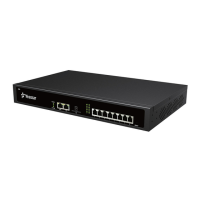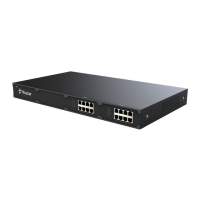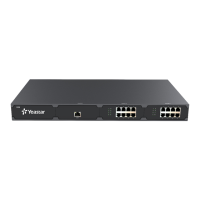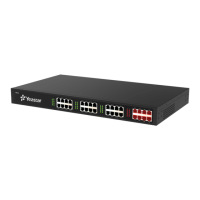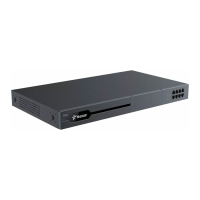S-Series IP PBX Administrator Guide
36
up.
Polarity Reversal: the call will be considered as “hang up” on a
polarity reversal.
Specify how many busy tones to wait for before hanging up. The
default is 4. If you wish to customize, enter the value in the text box
directly. Setting this too high might cause failure of busy detection.
Select the cadence of your busy signal. The default is None. If you
wish to customize, enter the value in the text box directly. The
input format should be "Sound,Silence". E.g. "500,500" means
500ms on, 500ms off.
If you choose None, the system will accept any regular
sound-silence pattern that repeats Busy Count times as a
busy signal.
If you specify Busy Pattern, the system will further check the
length of the tone and silence, which will further reduce the
chance of a false positive disconnection.
The busy detection interval. The default is 1. If you wish to
customize, enter the value in the text box directly.
Decide whether to enable detecting the busy signal frequency or
not.
If Frequency Detection is enabled, you must specify the local
frequency. The default is 480,620. If you wish to customize, enter
the value in the text box directly. Unit: Hz.
3) Answer Detection Type
Answer Detection will help the system to accurately bill your calls.
None:
Polarity: choose this option if the FXO trunk could send polarity reversal signal after a call is
established.
4) Caller ID Settings
Caller ID Settings will help the system to detect Caller ID. If an incoming PSTN call does not
display Caller ID, you need to confirm with your service provider if the line has enabled Caller ID
feature. If this line does support Caller ID, configure these settings to solve this problem.
Table 5-3 Caller ID Configuration Parameters
Whether to enable Caller ID detection.
Define the start of a Caller ID signal. The options are:
After Ring: detect Caller ID after first ring;
Before Ring: detect Caller ID before first ring;
After Polarity: detect Caller ID after polarity reversal;
The default is After Ring.
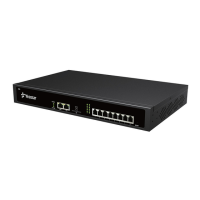
